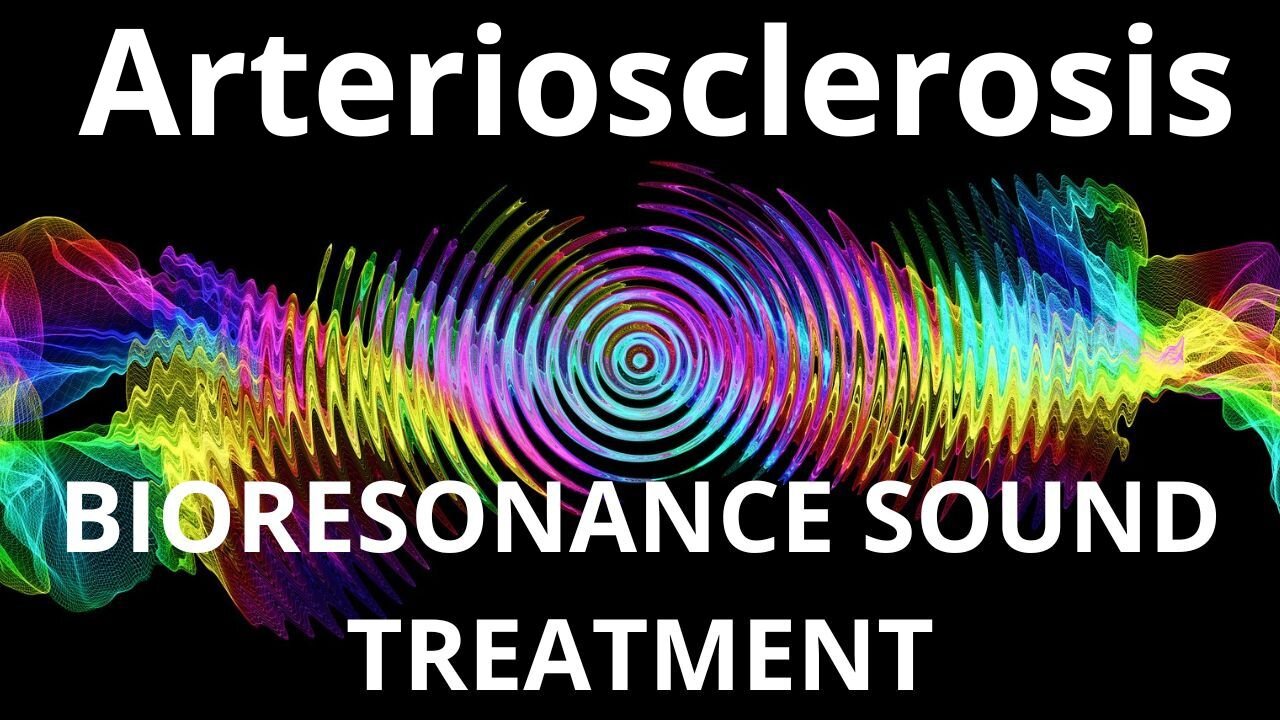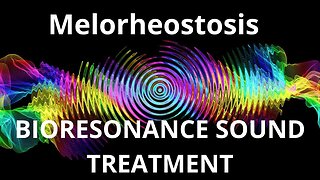Premium Only Content

Arteriosclerosis_Resonance therapy session_BIORESONANCE SOUND THERAPY
Arteriosclerosis and atherosclerosis are sometimes used to mean the same thing, but there's a difference between the two terms.
Arteriosclerosis occurs when the blood vessels that carry oxygen and nutrients from the heart to the rest of the body (arteries) become thick and stiff — sometimes restricting blood flow to the organs and tissues. Healthy arteries are flexible and elastic. But over time, the walls in the arteries can harden, a condition commonly called hardening of the arteries.
Atherosclerosis is a specific type of arteriosclerosis.
Atherosclerosis is the buildup of fats, cholesterol and other substances in and on the artery walls. This buildup is called plaque. The plaque can cause arteries to narrow, blocking blood flow. The plaque can also burst, leading to a blood clot.
Although atherosclerosis is often considered a heart problem, it can affect arteries anywhere in the body. Atherosclerosis can be treated. Healthy lifestyle habits can help prevent atherosclerosis.
Mild atherosclerosis usually doesn't have any symptoms.
Atherosclerosis symptoms usually don't happen until an artery is so narrowed or clogged that it can't supply enough blood to organs and tissues. Sometimes a blood clot completely blocks blood flow. The clot may break apart and can trigger a heart attack or stroke.
Symptoms of moderate to severe atherosclerosis depend on which arteries are affected. For example:
If you have atherosclerosis in your heart arteries, you may have chest pain or pressure (angina).
If you have atherosclerosis in the arteries leading to your brain, you may have sudden numbness or weakness in your arms or legs, difficulty speaking or slurred speech, temporary loss of vision in one eye, or drooping muscles in your face. These signal a transient ischemic attack (TIA). Untreated, a TIA can lead to a stroke.
If you have atherosclerosis in the arteries in your arms and legs, you may have symptoms of peripheral artery disease, such as leg pain when walking (claudication) or decreased blood pressure in an affected limb.
If you have atherosclerosis in the arteries leading to your kidneys, you may develop high blood pressure or kidney failure.
Music affects a person, it can calm and cheer up, sounds can heal. The therapeutic effect is due to the frequency fluctuations of various sounds that resonate with various organs of the body. Sounds have bioresonance compatibility with the vibrations of human internal organs, which is the basis of the positive effect of sound treatment. The sound vibrations of music trigger many mechanisms of higher nervous activity in the patient's subconscious and start the healing process.
Sound therapy does not replace medical treatment, but complements it, improves the positive dynamics of treatment and speeds up recovery.
TO ACHIEVE A POSITIVE RESULT, DAILY LISTENING TO VIDEOS IS REQUIRED.
I wish you health and prosperity!
You can purchase unique medicines in my store:
https://store11998180.company.site/
You have the opportunity to support the channel:
https://destream.net/live/RadSiarAl/donate
-
 30:00
30:00
BIORESONANCE SOUND THERAPY
21 days agoMelorheostosis _ Sound therapy session _ Sounds of nature
791 -
 25:46
25:46
Man in America
10 hours agoALERT: Gold Prices FLASH OMINOUS WARNING for the Dollar—Are You READY??
34.8K17 -
 58:27
58:27
Sarah Westall
6 hours agoWar Exploding Around the World: Nepal, Israel, Qatar, Venezuela, Thailand, more... w/ Michael Yon
41K12 -
 LIVE
LIVE
SpartakusLIVE
8 hours agoThe Most INSANE Snipes EVER || Solo to Duos w/ StevieT - PUBG or Mordor Later?!
402 watching -
 1:11:40
1:11:40
Flyover Conservatives
16 hours agoThe Truth About Israel & End Times Nobody Wants to Say - Phil Hotsenpiller | FOC Show
37.9K11 -
 LIVE
LIVE
GritsGG
5 hours agoSweaty Ranked Grind! Most Wins in WORLD! 3600+!
215 watching -
![[ Tekken Tuesday ] TNS Tekken Tournament Watch Party](https://1a-1791.com/video/fww1/5b/s8/1/4/a/C/g/4aCgz.0kob-small--Tekken-Tuesday-TNS-Watch-P.jpg) 4:04:31
4:04:31
CHiLi XDD
5 hours ago[ Tekken Tuesday ] TNS Tekken Tournament Watch Party
22.8K4 -
 1:53:04
1:53:04
Glenn Greenwald
9 hours agoIsrael Bombs Qatar and Trump Reacts; The Hoax to Blame Russia for Jamming EU President's Plane GPS; Mamdani Soars in Polls as he Tries to Moderate on Israel | SYSTEM UPDATE #511
103K66 -
 2:47:57
2:47:57
Barry Cunningham
8 hours agoLIVE: PRESIDENT TRUMP ANNOUNCEMENT | IRYNA ZARUTSKA DESERVES IMMEDIATE JUSTICE! NO WAITING!
62.8K61 -
 2:33:49
2:33:49
cosmicvandenim
16 hours agoCOSMIC VAN DENIM | Precision Tuning | WARZONE
11K5